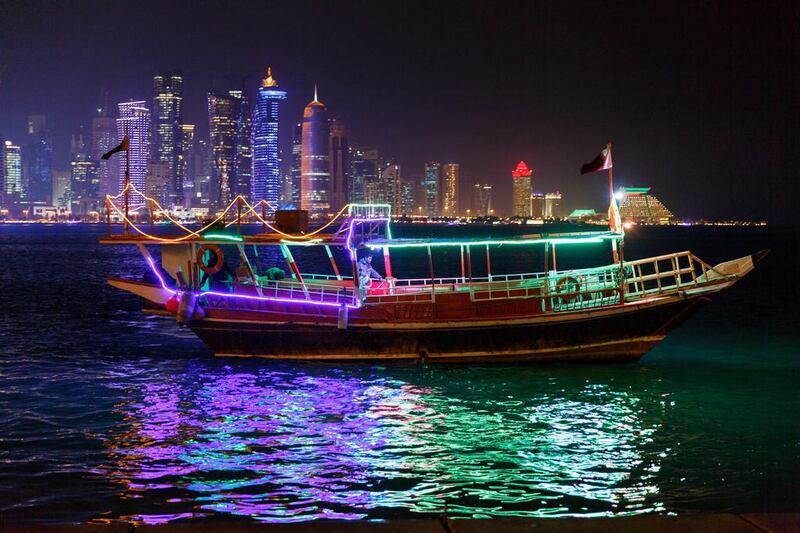Qatar plans to almost double tourism income over the next few years as visitor numbers grow and the nation hosts the 2022 Fifa World Cup.
The Qatar Tourism Authority (QTA) predicts the tourism sector’s total economic contribution will reach 81.2 billion Qatari riyals (Dh81.9bn), or 7.3 per cent of GDP, by 2026, up from 48.5bn riyals in 2015, according to the QTA.
In 2015, investment in travel and tourism activity comprised 2.2 per cent of the country’s total spending, with this expected to rise by 8.6 per year to 2026. The introduction of new demand drivers is seen as vital to supporting the continued rise in leisure spending, which is expected to reach 44.9bn riyals in 2026, while business travel spending is expected to rise to 17.5bn riyals in 2026.
Experiential travel, the main theme of this year’s Arabian Travel Market (ATM), is driving tourism growth in Qatar, as the country works towards its 2030 ambitions to welcome 10 million visitors a year and generate US$17.8bn in tourism receipts.
According to research released ahead of ATM 2017, which takes place at Dubai World Trade Centre April 24-27, Qatar will look to generate 5.2 per cent of its GDP through tourism over the coming years, creating 98,000 jobs and managing an inventory of 63,000 hotel rooms.
Qatar is also set to invest up to $45bn in new developments under the national tourism sector strategy 2030. These include $2.3bn earmarked for 2022 World Cup facilities and $6.9bn for transport infrastructure and associated projects.
“Qatar’s well-paced national tourism sector strategy 2030 will steadily boost tourism numbers over the coming decade, with the first milestone of four million visitors a year by 2020, well on track,” said Simon Press, the ATM senior exhibition director.
“The government, hotel operators, airlines and other stakeholders are now beginning to see a return on their investment into the country’s tourism sector. ”
Qatar among the fastest-growing destinations in the region in terms of visitor arrivals, averaging 11.5 per cent growth over the past five years, according to the QTA. The authority recorded arrivals of 2.18 million visitors in the first nine months of2016, including more than one million GCC nationals.
Qatar’s Hamad International Airport saw passenger traffic jump 20 per cent in 2016, handling some 37.3 million passengers, a rise of 7.3 million from the previous year. The surge is partly attributed to Qatar Airways’ addition of 14 new destinations last year. The airline has also announced the world’s longest flight by duration – a 17-plus hour route from Auckland to Doha.
Arrivals in 2017 will also receive a boost from the cruise season, running from October 2016 to April 2017, the QTA said. It is expected up to 30 ships will dock in Doha during the current season, generating 55,000 visitors. This could reach as many as 250,000 passengers by the 2018/19 season.
To deal with the expected demand, Qatar currently has 22,921 hotel rooms with a further 15,956 rooms under contract, representing a 69 per cent increase in total stock in the current pipeline. However, the country posted a decline in hotel performance across all key metrics over 2016, as overall occupancy dropped 12.2 per cent and RevPAR, or revenue per room, fell by 18.8 per cent.
chnelson@thenational.ae
Follow The National's Business section on Twitter






